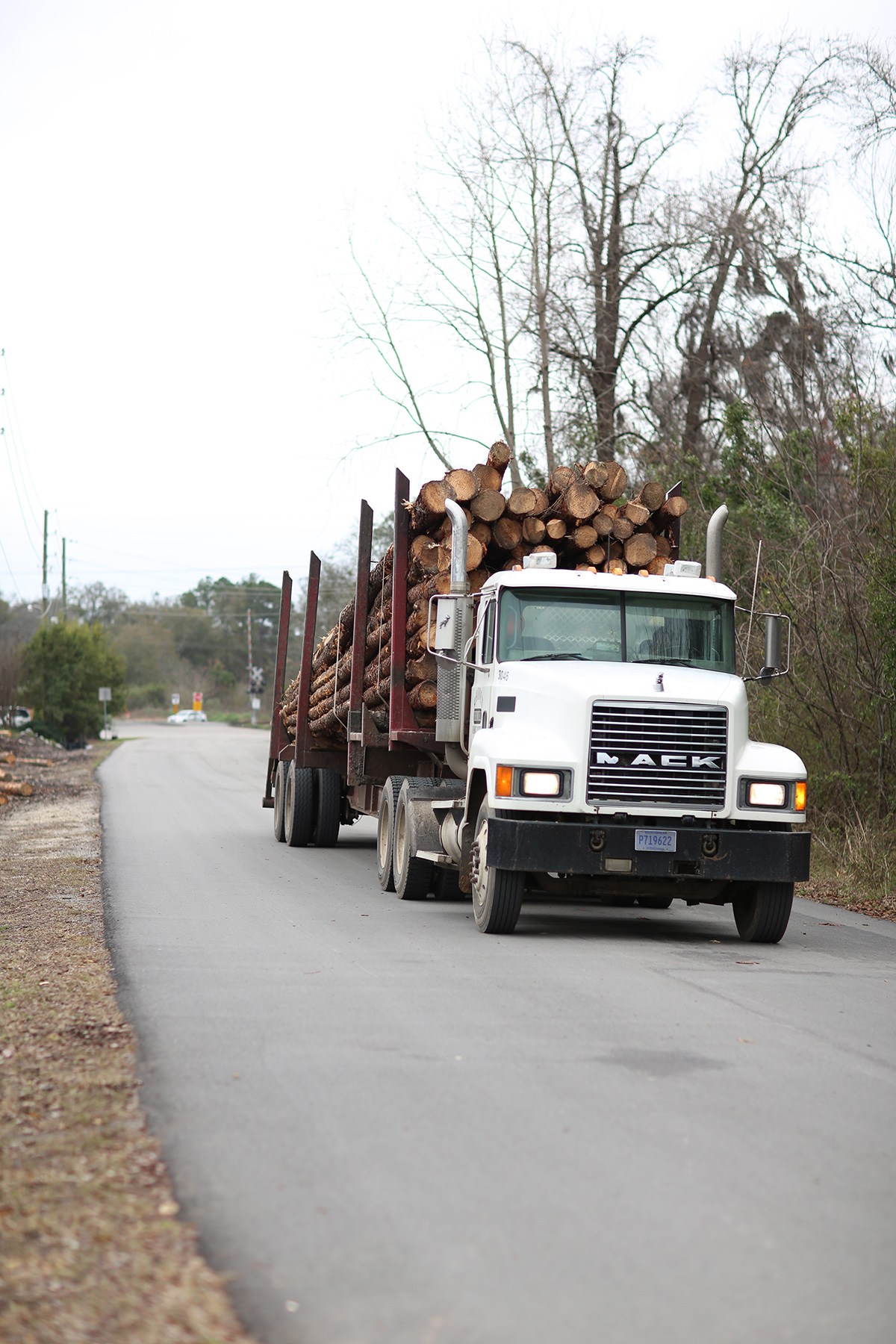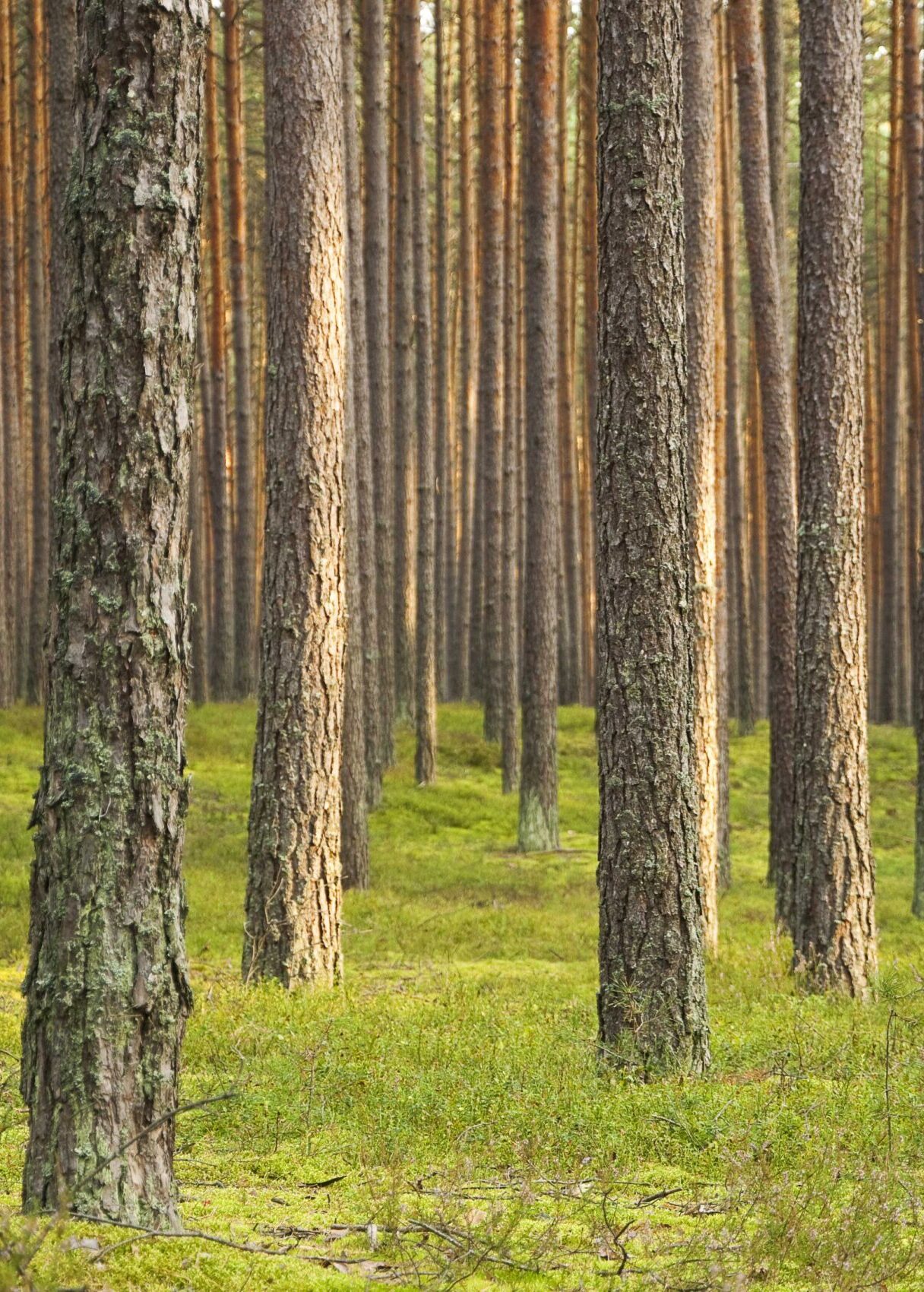Sustainability
Southern Yellow Pine has a negative carbon footprint and is completely sustainable. If you want to plan an environmentally friendly building project, then look no further.
Southern Yellow Pine is more sustainable at every stage of its life, from growth to cutting, conversion to lumber, and even disposal.
Sustainability and green living have become more than buzzwords over the past decade, and most people now recognize how vital it is to make sure we’re still thriving on this planet for generations to come. Fortunately, trees can be one of the ways to remove excess carbon dioxide from the air and help prevent extreme climate change, making lumber a vital tool for capturing and storing excess emissions.
Southern Yellow Pine is harvested from forests throughout a number of Southern and Southern-coastal states, and you can bet those folks know how to run a sustainable operation. Each forest represents a considerable amount of carbon stored away inside its golden trunks.
Bark + Wood Chips + Sawdust = Zero Waste
NONE of the byproducts resulting from the log-to-lumber process are actually wasted. The process includes cutting off branches, debarking the resulting logs and sawing them to specific dimensions.
Sawmills Power Themselves
Byproducts keep sawmills economically and environmentally sustainable. Wood residuals contribute to the sustainability of sawmills is by generating heat for kilns, which are often utilized in drying, a step in the process that removes moisture from the lumber.
Cutting down trees helps the environment
Growing more trees pulls more carbon out of the atmosphere, storing it in the forest. When the wood is harvested, it keeps this carbon locked away in the timber. Even if it’s burnt as a biofuel, this still has a benefit as it reduces the dependency on fossil fuels. Supporting sustainably managed forests is more important than ever.
SYP grows fast, a mature tree can be grown in approx. two decades.
With sustainable forestry, timber can be harvested in a traditional way, with no negative impact on the eco-system around them. This makes SYP a great sustainable biofuel, compared to fossil fuels which take millions of years for carbon to turn into coal, oil or gas.
In a natural forest, old-growth trees eventually wither and rot, releasing most of their captured carbon before disappearing into the soil. In a properly managed forest, trees are instead harvested at the peak of their vitality, ensuring more carbon stays within the wood when it’s shipped off to be used for construction or paper-pulp applications. Meanwhile, new seedlings are planted which will grow to capture their own store of carbon and repeat the process into the future.



The top of any conscious consumer’s checklist is the carbon footprint. On that front, Southern Yellow Pine come out on top.
The reason is simple: Plants are mostly carbon, especially woody plants. While trees are known for effectively scrubbing carbon from the air when they’re alive, the wood continues storing carbon even once it’s cut and turned into lumber.
This happens because most of the carbon that a tree absorbs during its lifetime is converted into the cells making up the wood. Indeed, lumber is the material of choice for environmentalists for that exact reason.
The environmental impact of building materials can be measured by the amount of energy used in its life cycle. This is calculated by balancing its carbon footprint (all the energy used to make that product, including getting the raw materials, transporting, processing, manufacturing and use), against any other effects such as a reduction in the use of fossil fuels or other building materials.
Various life cycle assessments for different materials, have found that soft woods like Southern Yellow Pine actually remove more carbon from the atmosphere than their production creates. This results in a negative carbon footprint.
In fact, the production of soft wood lumber uses significantly less energy than making the same amount of other materials such as wood-composite, steel or cement, which use a lot of fossil fuel resources to be produced. Making cement involves massive CO2 emissions, for example. At the end of its life, wood wins out again: it can be recycled, burned as a biofuel, or land filled, extending the carbon storage for decades until it decomposes naturally.

Lumber is local
Trees are grown across North America, enabling lumber to be sourced locally, reducing the need to rely on transporting the materials and thus, reducing carbon emissions. Not having to transport lumber also reduces the costs associated with transport and is a lighter material to transport when it is necessary, ultimately making it a more affordable material to source.
Lumber is renewable
Trees can and are planted regularly and North America offers a wide variety of climates that are perfect for growing and maintaining forests of trees of various types. It is one of the rare commodities that we, as a society, can manage and maintain. As long as we have soil and oxygen and the right climate, lumber will continue to provide us with a material that can be used in a litany of ways, without ever losing its accessibility and availability for greater, long-term and future use.
Lumber is sustainable
Standards for harvesting wood in North America exist to ensure that forests are maintained and not irreparably damaged by our reliance on the amazing resource that is lumber. The sustainability of the lumber industry helps to keep it a solid, environmentally consciously option that will maintain lumber as one of our most valuable, natural resources for generations to come.
